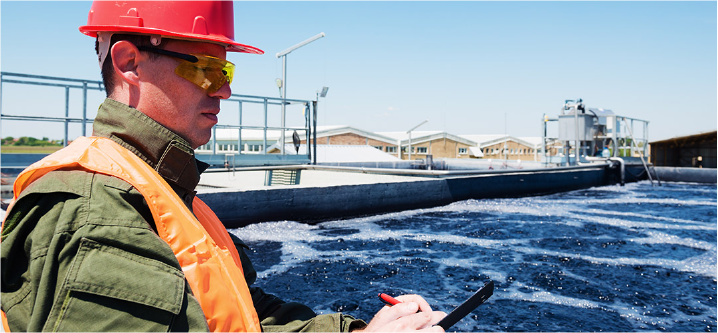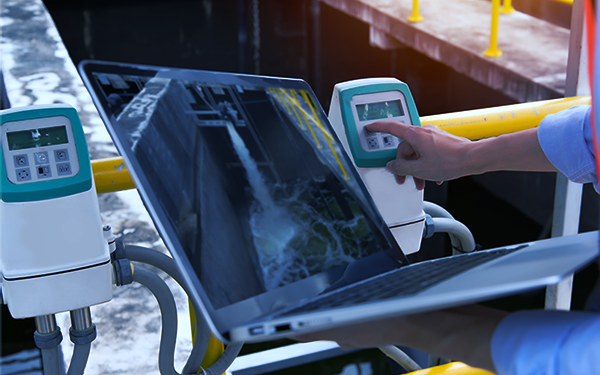Polymer Feed Design Essentials
Considerations For Polymer Feed Systems
Industrial polymer feed systems are an essential component of many manufacturing processes. They allow for precise control of chemical dosing and mixing, ensuring the final product meets quality standards. However, designing an effective polymer feed system requires careful consideration of several factors, including flow rates, chemical compatibility, and dosing accuracy. In this blog post, we will explore some best practices for designing industrial polymer feed systems, to obtain optimal activation levels of emulsion polymer.

Collaborate with Modus Engineered Solutions
Improve operational efficiencies and compress time to market by leveraging innovation.
Flow Rates
One of the most critical design considerations for a polymer feed system is the flow rate. The flow rate is the rate at which the polymer is delivered into the process stream. A flow rate that is too low can result in inadequate mixing, which can present as inadequate coagulation/flocculation. On the other hand, a flow rate that is too high can cause clogging and damage to the system, which can present excessive clogging of inline filters, etc.
With this in mind, the ideal flow rate will depend on several factors, including the desired polymer concentration, the process flow rate, and the size and type of the equipment being used. It is essential to consider the specific requirements of the process and to test the system under various conditions to determine the appropriate flow for your system.
Typically, polymer is made down into a 0.5% to 1% solution before it’s mixed with the stream to be clarified. Depending on the flow rate, emulsion polymer can be made down (activated) as it is flowing into a system, or it can be made into a batch tank and aged. Accordingly, polymer is then fed into the system at the proper rate from the ageing tank.
System Operation and Maintenance
With this in mind, we know polymer and water do not mix together well if brought together at the wrong rate. Therefore, if it is mixed incorrectly, Polymer will react with water and turn into a very viscous (often referred to as snot balls) mess. Obviously, this will cause the make down equipment to plug and will require maintenance to clean it out and put it back in service. To counter this potential disaster, it’s best to have auto flush controls in place that will start the water flow prior to neat polymer flow. Therefore, when it’s time for the system to stop, the reverse will happen. The polymer feed will stop prior to the water, thus flushing the system. Accordingly, this auto-flush system is available with our MixMate™ Polymer Feed System manufactured by Modus Engineered Solutions.

Chemical Compatibility
Additionally, chemical compatibility is a critical design consideration for industrial polymer feed systems. The materials and elastomers used in the system must be resistant to the chemicals being dosed to prevent corrosion, degradation, or failure. Furthermore, compatibility issues can also affect the accuracy and consistency of the dosing, leading to product quality issues.
Therefore, when selecting materials for the polymer feed system, it is important to consider the specific chemicals being used and their concentrations. The compatibility of the materials with the chemicals can be determined through testing, and any potential issues should be addressed before the system is installed.
Dosing Accuracy
Finally, after identifying the proper flow rate, system operation, and materials for your system, you must consider your dosing accuracy. Accurate dosing is critical for achieving consistent product quality and minimizing waste. Hence, the system must be properly calibrated and tested to ensure dosing accuracy,
Several factors can affect the accuracy of the dosing, including variations in process flow rate, changes in chemical properties, preparation water flow rate and pressure, and equipment wear and tear. Regular maintenance and calibration can help address these issues and ensure the system is functioning correctly.
Best Practices
Accordingly, to design an effective polymer feed system, it is essential to consider the specific requirements of the process and to follow best practices for flow rates, chemical compatibility, and dosing accuracy. Some best practices for designing industrial polymer feed systems include:
- Perform thorough testing and analysis to determine the appropriate flow rate for the system.
- Perform thorough testing and analysis to determine the appropriate flow rate for the system.
- Ensure the system is properly calibrated and tested to ensure accurate dosing.
- Ensure the system is properly calibrated and tested to ensure accurate dosing.
- Consider using automated dosing systems to ensure consistent and precise dosing.
- Automate Pre and Post flush of the Make Down system to ensure no clogs.
Conclusion
Ultimately, designing an effective industrial polymer feed system requires careful consideration of flow rates, polymer type, chemical compatibility, dosing accuracy and ease of maintenance. And, by following best practices and performing thorough testing and analysis, it is likely that you will design a system that delivers consistent and high-quality results while minimizing waste and downtime.
Collaborate with Modus Engineered Solutions
Improve operational efficiencies and compress time to market by leveraging innovation.
About Us
Modus Engineered Solutions is the preferred provider of critical service solutions. We leverage the vast experience and knowledge gained across our combined histories to provide exceptional solutions. We don’t just sell parts and service to our customers; we help them realize new and better ways to run more efficiently.
Copyright © Modus Engineered Solutions all rights reserved.
